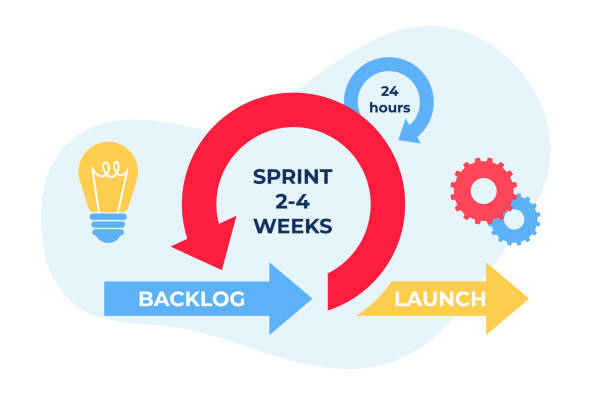A sprint is a short, time-boxed period when a scrum team works to complete a set amount of work. You can see sprints in product management like sprinting in sports. Sprinting in sports and sprints in Product management are similar in that they both require a combination of speed, agility, and strength to be successful. Sprints are a great way to challenge yourself and push your limits. During a sprint, the product team comes together to plan, design, develop, test, and deploy their product in a short amount of time.
Sprints are at the very heart of scrum and agile methodologies, and getting sprints right will help your agile team ship better software with fewer headaches. To achieve a goal or build a product, you will require a series of sprints. The sprints essentially are the breakdowns of the big and complex projects. They are the small chunks of work that makes up the building process.
Sprints in Product management are a great way to quickly develop and launch products. They involve a team of product managers, designers, developers, and other stakeholders working together to create a product in a short period of time. By focusing on the most important tasks first and using agile methods, product teams can quickly deliver high-quality products that meet customer needs. Sprinting also helps teams stay organized and focused on the goal while avoiding scope creep. With sprints, product managers can ensure that their products are launched on time and with the highest quality possible.
A sprint can be in two weeks, a week, or even less depending on the product team.
With a timeframe in mind, every hand comes on deck to ensure the tasks allocated within the sprint is achieved. At the end of the time frame, the work done so far is evaluated and reviewed. The tasks left to be achieved can be moved to the next sprint if it is still considered important for the next phase.
With the everchanging needs and desires of users, sprints are a great way for teams to move quickly and efficiently while still ensuring that the product meets the customer’s ever-changing needs. This way the product team is always up to date with current trends and responding accordingly. This implies that once a sprint is taking too long, it defeats its purpose.
A sprint is a short, time-boxed period when a scrum team works to complete a set amount of work. You can see sprints in product management like sprinting in sports. Sprinting in sports and sprints in Product management are similar in that they both require a combination of speed, agility, and strength to be successful. Sprints are a great way to challenge yourself and push your limits. During a sprint, the product team comes together to plan, design, develop, test, and deploy their product in a short amount of time
Sprints are at the very heart of scrum and agile methodologies. Getting sprints right will help your agile team ship better software with fewer headaches. To achieve a goal or build a product, you will require a series of sprints. The sprints essentially are the breakdowns of the big and complex projects. They are the small chunks of work that make up the building process.
Sprints in Product management are a great way to quickly develop and launch products.
They involve a team of product managers, designers, developers, and other stakeholders working together to create a product in a short period of time. By focusing on the most important tasks first, product teams can quickly deliver high-quality products that meet customer needs. Sprinting also helps teams stay organized and focused on the goal while avoiding scope creep. With sprints, product managers can ensure that their products are launched on time and with the highest quality possible.
A sprint can be in two weeks, a week, or even less depending on the product team. With a timeframe in mind, every hand comes on deck to ensure the tasks allocated within the sprint is achieved. At the end of the time frame, the work done so far is evaluated and reviewed. The tasks left can be moved to the next sprint if it is still considered important for the next phase.
With the ever-changing needs and desires of users, sprints are a great way for teams to move quickly. It also ensures efficiency while still making sure that the product meets the customer’s ever-changing needs. This way the product team is always up to date with current trends and responding accordingly. This implies that once a sprint is taking too long, it defeats its purpose.

